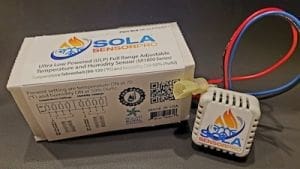
In the realm of attic ventilation, two essential components play distinct yet equally important roles: the humidistat and the thermostat. While they may seem similar at first glance, understanding the key differences between these devices is crucial for maintaining optimal ventilation in your attic.
Let’s start by unraveling the purpose of each device. A thermostat regulates temperature levels within a designated space, such as your attic, garage, or other ventilated space. It detects the ambient temperature and signals your ventilation fan to turn on or off ensuring that your desired temperature is maintained.
A humidistat monitors and controls humidity levels within a specific area, such as your attic or garage. It measures the amount of moisture in the air and adjusts your ventilation fan to maintain a healthy humidity range, typically between 30% and 50%.
While both devices serve distinct functions, their roles intersect in creating an optimal indoor environment. For instance, during the summer months, a thermostat may activate your ventilation fan to cool down your attic. Simultaneously, a humidistat can work in tandem to ensure that excess moisture is removed from the air, preventing the growth of mold and mildew.
Even if the temperature doesn’t reach the required height to turn on your ventilation fan, if the humidity gets too high, the humidistat will turn the fan on anyway to get rid of the excess humidity in your attic. This maintains a safe humidity level that promotes respiratory health and protects wooden furniture and flooring from damage.
Both the humidistat and thermostat are crucial for maintaining indoor comfort, energy efficiency, and the overall well-being of your home. While the thermostat focuses on temperature regulation, the humidistat complements it by managing humidity levels, creating a harmonious balance that promotes a healthy and comfortable living environment. Ideally, your solar attic ventilation fan should make use of both a humidistat and a thermostat to ensure peak efficiency.
Understanding the difference between a humidistat and a thermostat is key to optimizing your home’s ventilation systems. By recognizing their distinct roles and importance, homeowners can ensure efficient operation, enhanced comfort, and improved indoor air quality year-round.
